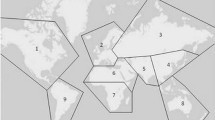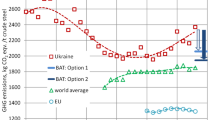Summary
Direct iron smelting is a new means of converting iron ore into hot metal near the mine site, by-passing traditional blast furnaces. A previous analysis for northern Minnesota recommended that “active surveillance” be maintained of two specific direct smelting technologies.
This study compares the cost of producing pig iron by these two technologies at three locations (northern Minnesota, eastern Canada, and Brazil), including shipment of the final product to Chicago. This economic analysis concludes that the locations outside the United States are clearly favored for both processes despite several interpretations that were generous to the Minnesota location. The Inred iron smelting process in Brazil was found to have the lowest cost overall, followed by Plasmasmelt in Brazil and Plasmasmelt in eastern Canada. The most expensive of the six sources of pig iron analyzed was Plasmasmelt in Minnesota. To improve the Minnesota economics, the cost reductions associated with integrating an existing power plant were evaluated. The improved economics for both technologies, however, were not large enough to overcome the foreign advantage.
Similar content being viewed by others
References
H.W. Lownie, Jr., T.L. McLeer, R.S. Davidson, and C.W. Moody, “Technical and Economic Feasibility for Production of Direct-Reduced Iron in Minnesota — Final Report,” Battelle Columbus Laboratories, Columbus, Ohio, EDA Grant Number 06-06-01841 for the Economic Development Admin., U.S. Dept. of Commerce, March 1982.
Jack D. Shipley, “Steel Firm May Test Smelting Taconite Directly into Pig Iron,” Duluth News Tribune, June 2, 1983, p. A-1,9; and David Shaffer, “Taconite Firm Studies Way to Bypass Pellets,” St. Paul Pioneer Press, June 3, 1983, p. C-1,2.
Terry Gunderson, “IRRRB Okays Pig Iron Loan,” Hibbing Tribune, August 7, 1983, p. 1; and M.J. Lemont, and Sandy Davis, “$1.3 Million Loan For ‘Plasmasmelt,’” Mesabi Sunday News, August 7, 1983, p. 1.
Peter J. Kakela, Allen K. Montgomery, and William C. Patric, “Factors Influencing Mine Location: An Iron Ore Example,” Land Economics, Vol. 58, No. 4, November 1982, pp. 524–536.
Personal communication, letter from Minnesota Power Executive to Kenneth Reid, June 1982.
Hans I. Elvander, “The Inred Process: A Revolutionary Method to Produce Hot Metal,” Iron and Steel Engineer, April 1982, pp. 57–60.
Author information
Authors and Affiliations
Additional information
Dr. Reid received his BSc in chemical engineering from the University of Birmingham, England (1957) and PhD from Cambridge University (1960). Before his appointment to his current position as director of the Mineral Resources Research Center and professor of mineral engineering at University of Minnesota, he worked for CSIRO in Australia where he conducted basic research on simulation and control of grinding classification and flotation systems; served as associate professor at McGill University, Montreal; and created and headed IPAC Services, a department which provides technical services in process analysis and control for two principal mining companies in Zambia.
Dr. Kakela received his BS from Michigan State University, (1962), MA from Miami University, Ohio (1964), and PhD from the University of Alberta (1969), all in physical geography. He is currently developing separate measures of technical efficiency, labor efficiency, and financial efficiency for the domestic iron ore and steel industries.
Rights and permissions
About this article
Cite this article
Reid, K.J., Kakela, P.J. The Influence of International Location on the Competitive Posture of Two New Technologies. JOM 35, 30–38 (1983). https://doi.org/10.1007/BF03339186
Published:
Issue Date:
DOI: https://doi.org/10.1007/BF03339186




